If you’re not familiar with bank rules, let’s start there. Bank rules are a way for you to ask QuickBooks Online (and QuickBooks desktop) to prefill some information when transactions are downloaded from the bank. If you’re familiar with the phrase, it falls into the category of “if this, then that”.
When you download transactions from the bank, you’re adding them to a to-do list for you (as the human) to assign a name and an account/category and add them to the bank (or credit card) register.
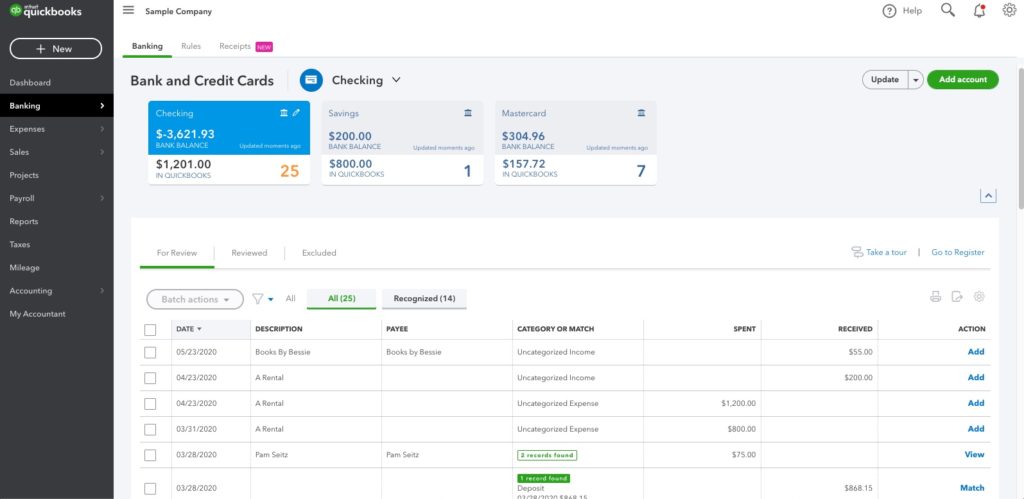
In this example, 25 transactions for the checking account need to be resolved. Looking at the 2nd, 3rd, and 4th lines, we can see that these are all transactions related to “A Rental,” we can assume that the expense account is the same for all three. This is a great example of how bank rules can save you time. Instead of naming and correcting the expense account for all three, QuickBooks can do that for us.
Click on a transaction; in this case, I clicked on the $1,200.
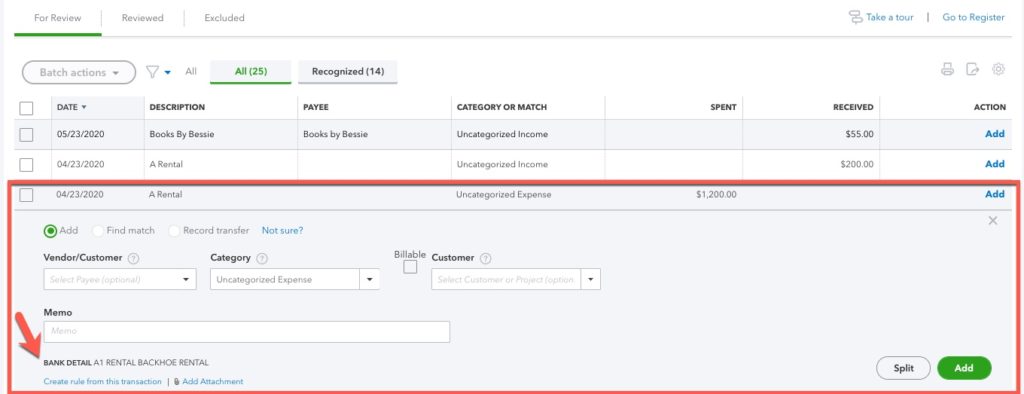

On the bottom left hand corner of the box that just opened or expanded you’ll see a blue hyperlink that says “create rule from this transaction”. Doing this will open a new screen, the bank rule screen! Are you surprised? 😉


To create a rule, you’ll need to fill in the boxes.
- Rule name: This is the name that will be used to sort your list alphabetically. It is just for you.
- For: Does this apply to money going into OR out of your bank account(s)?
- In: Does this rule apply to all of your bank accounts, just some of them, just one? You pick!
- When a transaction meets [ ] conditions: I change this to “any” or “all”.
- Drop down lines: I click on “add line”, I have the first field say “Bank text”, the second field say “Contains” and then for the last field I copy and paste the bank text from the downloaded data.
- Transaction type: What is this? Is this an expense? A transfer? Pick whatever applies.
- Payee: Who (human or business name) is getting the funds
- Category: What account on the chart of accounts applies to this situation?
- Memo: Do you want to add something to the Memo field?
- How do you want to apply this rule?: Auto-categorize and auto-add automatically adds it to your register without stopping at the bank feeds screen. Auto-categorize and manually review let’s you review it in the bank feeds first.
Pick whichever you’d prefer. I recommend manual review until you get comfortable.


Above, you can see how I set this up for my example.


Above, you can see how using bank rules changed the bank feeds. QuickBooks Online automatically renamed the payee from a blank field and changed the expense from uncategorized expense to the expense account I picked.
You’ll notice that the $200 deposit isn’t renamed, and the account isn’t updated. This is because the rule you just created ONLY applies to money out.
NOTE: QuickBooks runs bank rules sequentially. This can cause some rules to “override” others. If you notice some of your rules not running, click on the Rules tab on the Banking screen and change the order that your rules run:
Want to play around in the sandbox without messing up your QuickBooks Online data file? Here is the link to Intuit’s test file: https://qbo.intuit.com/redir/testdrive
☕ If you found this helpful, you can say “thanks” by buying me a coffee…
https://www.buymeacoffee.com/gentlefrog
If you’d prefer to watch a video tutorial, a video is below:
- How to Record Stripe Deposits with Fees in QuickBooks Online
- How to Track and Manage Bills in QuickBooks Online With the A/P Aging Summary Report
- What Happens When You Merge Two Reconciled Bank Accounts in QuickBooks Online?
- How to Enable Account Cards in QuickBooks Online’s Bank Transactions Screen
- How to Find Out Which QuickBooks Online Clients Require Immediate Attention for Payroll Tax Updates

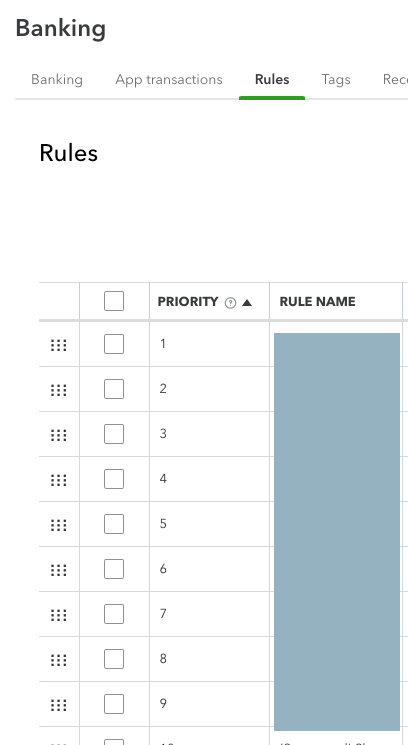




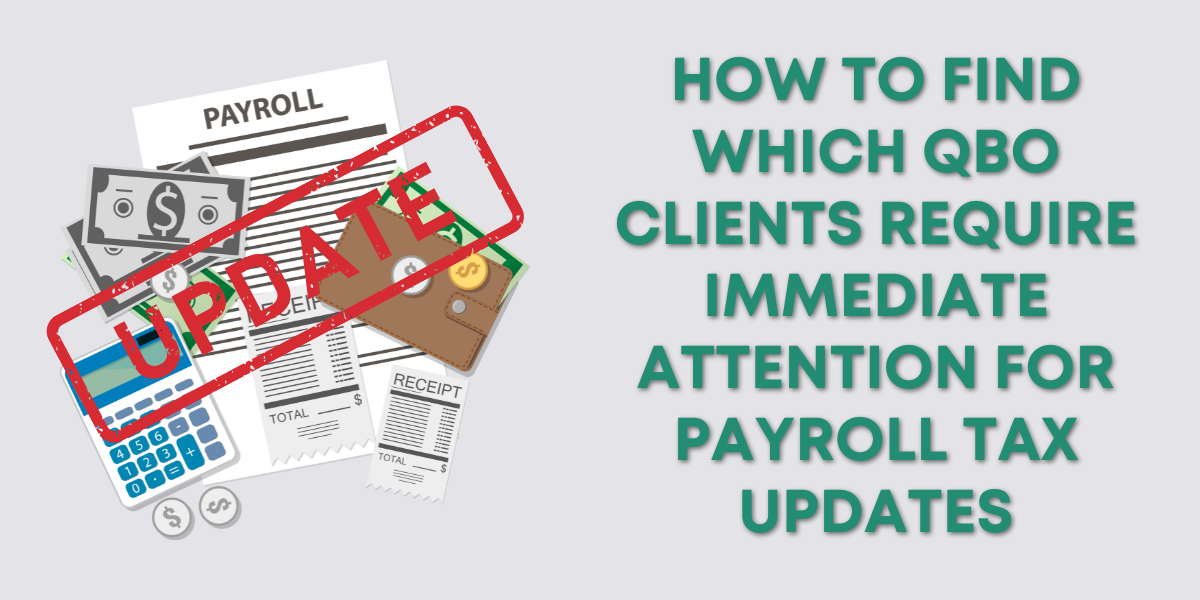
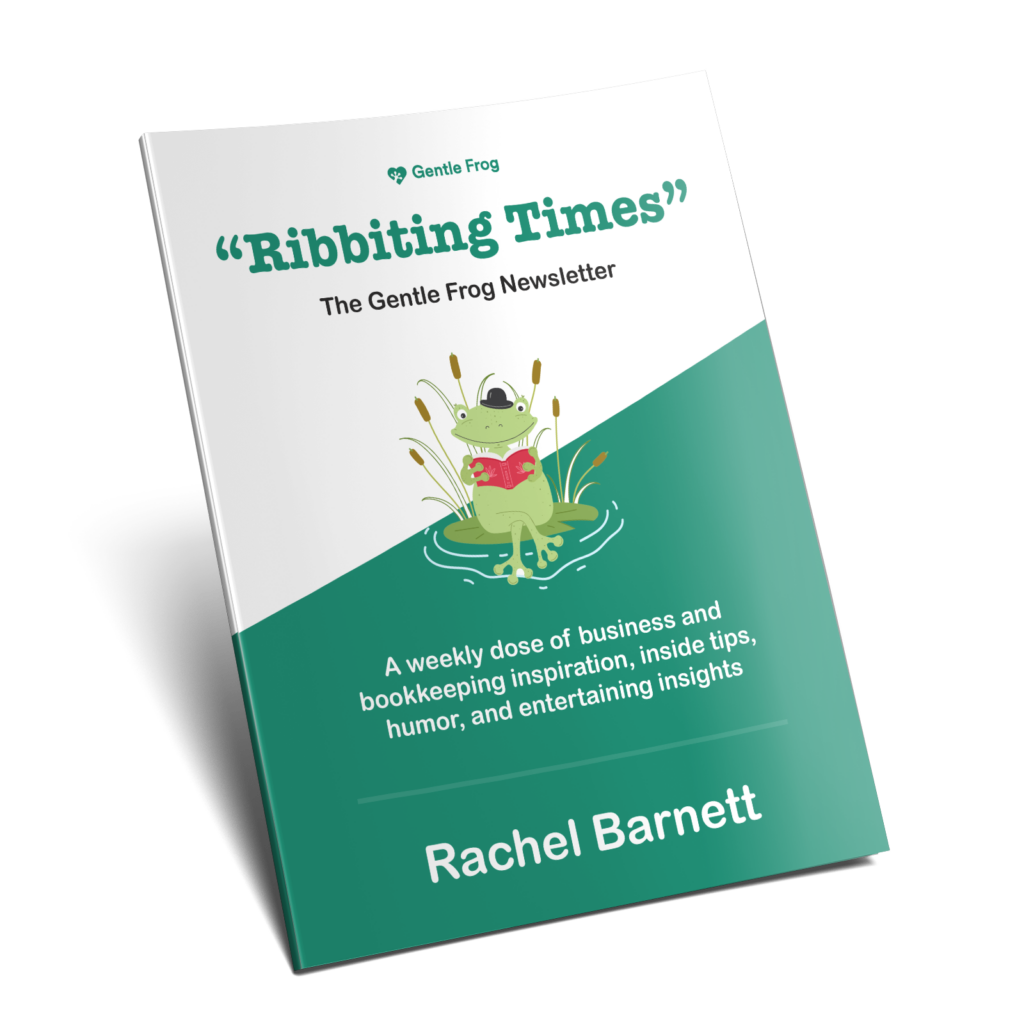
2 Responses
I’m trying to determine if it’s best to have my rules set up prior to importing my bank trx or not.
In prior years , even if I have some rules created, the bank feed trx seem to either ignore or not accurately comply with my rules which creates extra work.
Thx
Be Well.
Hi Christopher,


Bank rules can be helpful but it’s important to note that QB processes them in sequential order. You can see the order on the left of the list of rules:
Changing the order of your rules apply could help.
-Jess